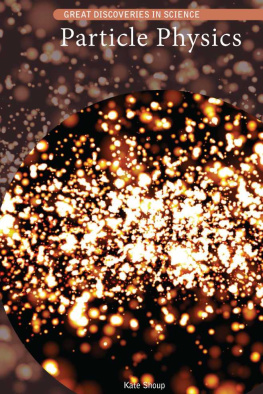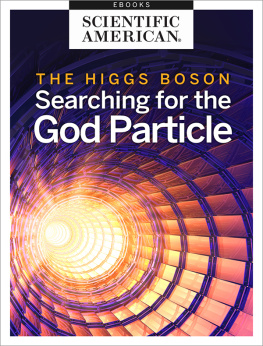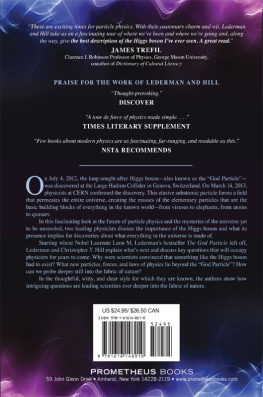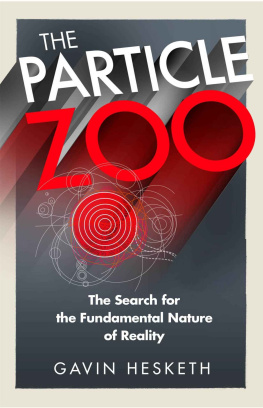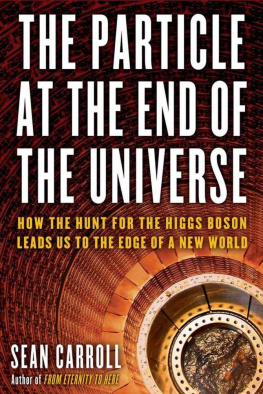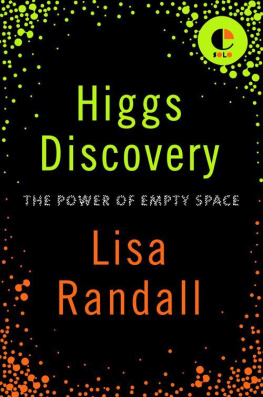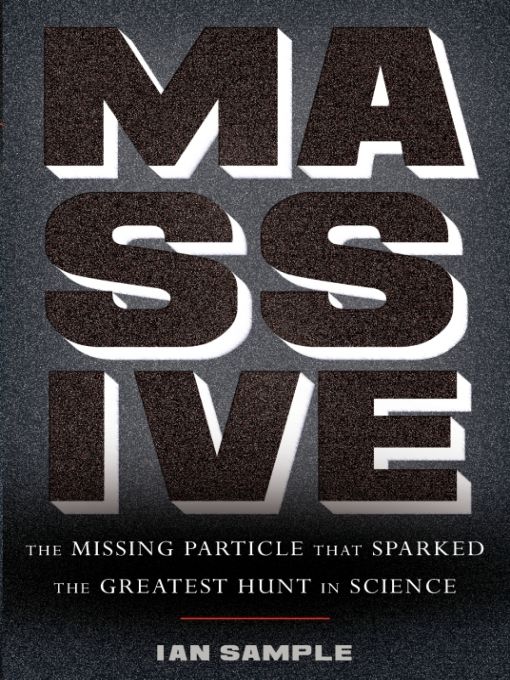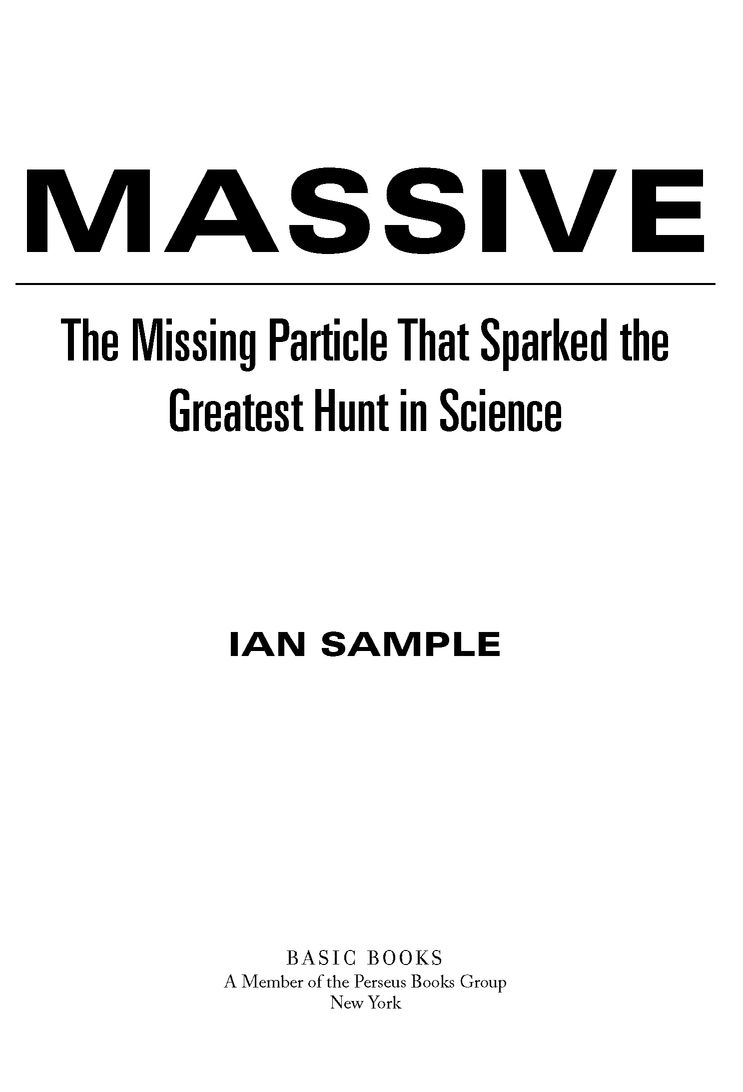Table of Contents
For my parents
PROLOGUE
The mountainside village of Crozet in eastern France has commanding views over miles of countryside. Villages and farmhouses dot the fields below, a few narrow roads meandering between them. Apart from a handful of modern buildings that sit in a huge ring on the landscape, there is nothing here that looks unusual.
But this is a far from ordinary place. Some of these surface buildings conceal deep shafts that reach down to the largest, most sophisticated machine mankind has ever built. If a giant tore it from the ground and stood it up like a hoop, it would reach more than five miles into the sky. To switch it on is to invite an electricity bill equal to that of a fair-sized city.
This is the home of the Large Hadron Collider (LHC), a multibillion-dollar atom smasher run by CERN, the European nuclear research organization, on the outskirts of Geneva. More than twenty countries clubbed together to pay for this leviathan and took over a decade to construct it. Ten thousand scientists here and in laboratories around the world are connected to the information it churns out via a distributed computing grid that has been touted as a new model for scientific collaboration.
Inside the machine itself, fragments of atoms are whipped up to within a whisker of the speed of light and slammed together in head-on collisions. These orchestrated acts of violence are said to re-create conditions that prevailed in the first moments of the Big Bang, the cosmic eruption that gave birth to the universe. Amid these fleeting specks of primordial fire, scientists look for answers to the most profound mysteries of nature.
One of these mysteries, perhaps the most intriguing of all, has hung over scientists for nearly half a century. The frank admission is this: scientists cannot explain why stuff weighs what it does. They can get closevery close, in factbut there is always something missing. And they know the reason why. Smash something to pieces, into dust, then atoms, then fragments of atoms, and you will eventually reach the smallest building blocks of matter. The baffling, perplexing truth is that scientists do not know why these particlesfrom which all else is madeweigh anything at all.
In 1964, a physicist working with pen and paper in his Edinburgh office stumbled on what most scientists believe is the answer to the mystery. Peter Higgs conceived of an invisible field that reaches into every corner of the cosmos. At the beginning of time the field lay dormant, but, as the newborn universe expanded and cooled, it came to life and made its presence known. In that moment the building blocks of matter flipped from weightless to weighty. The massless became massive. The consequences are all around us. They are the bedrock of our existence.
Without the field, our universe would be a frantic storm of particles hurtling around at the speed of light. The atoms and molecules we know would not exist. Cosmic material would never have clumped together to form galaxies, stars, and planets. There would be no familiar structure to the universenowhere for life to gain a first, tentative foothold.
A scientist at CERN once told me the field was like the snow that had fallen that night and settled on this idyllic French-Swiss landscape. Imagine a snowfield that goes on forever in all directions. Beams of light move through it as though they have skis on: they zip through the field as if it werent there. Some particles have snowshoes and make less swift progress. Others go barefoot and are destined to trudge around at a snails pace. A particles mass is simply a measure of how much it gets bogged down in the field.
The Large Hadron Collider was designed to reveal once and for all the true nature of the field that Peter Higgs envisaged. The machine should create ripples in the field that appear as particles called Higgs bosons. They are the snowflakes that make up our cosmic snowfield and the final proof scientists need to fully explain why stuff weighs anything.
CERN is not the only place hunting for the particle. On the outskirts of Chicago, scientists at Fermilab, home to the second most powerful collider in the world, also made the particle their top priority. For the two laboratories on either side of the Atlantic, the decades-long hunt has become the greatest race in modern physics.
There is more to finding the Higgs particle than pride. It is the only missing piece of the Standard Model, a set of laws that describe all of the known particles in the universe. But that is only the beginning. A growing band of scientists believe the Higgs particle will not only solve the mystery of mass, but open a portal to a hidden world of particles and forces we can only begin to imagine.
The elusive nature and profound importance of the Higgs particle led one Nobel Prize-winning physicist to give it a grandiose nickname: the God particle. As you will find, if you read on, few things unite physicists more than their disdain for the name. Their contempt is equaled only by the joy of newspaper headline writers, for whom it has become a savior of a very different kind.
This book is the story of how the universe got its mass, and how an idea written down in a notebook nearly half a century ago became the focus of a global, multibillion-dollar hunt involving thousands of scientists and the largest, most complex machines ever built. Whichever way you look at it, this story is massive.
Long Road to Princeton
The drive up to Princeton could take the better part of a day, and that was if you were lucky. The route followed the coastline up the eastern seaboard, looped around the broad expanse of the Chesapeake Bay, and went on to Washington, Baltimore, and Philadelphia before finally arriving in the town that was once home to the greatest physicist of all, Albert Einstein.
Peter Higgs packed some clothes and a folder full of research notes and went out to the car with his wife, Jody, and their six-month-old son, Christopher. He swung the suitcase in the back and had a long look at the road map. Satisfied with the directions, he pulled away, working north and east through the tree-lined streets and out toward the highway as the town eased itself to life beneath the spring morning sun.
It was March 14, 1966. Higgs, a physicist at the University of Edinburgh, had moved to Chapel Hill the previous year to spend his sabbatical at the University of North Carolina. His work there had caught the eye of a prominent scientist, who invited him to give a seminar at Princetons Institute for Advanced Study, one of the worlds leading intellectual centers and the place where Einstein himself had spent much of his working life. The seminar was destined to be controversial: Higgs had proposed an idea that, if correct, could explain the origin of mass.
The trip turned out to be more than just another academic visit. It marked the beginning of a run of events that catapulted Higgs into the scientific limelight and set the stage for the greatest hunt in modern physics. Using multibillion-dollar machines occupying miles of underground tunnels, thousands of scientists have spent decades looking for the particle that formed the linchpin of Higgss theory. Their mantra was simple: find the Higgs particle and the mystery of the origin of mass was solved.
For centuries, scientists had no idea that mass even had an origin, at least not in the modern sense of the phrase. The word mass described how much matter an object had, and matter was no more than a grand term for stuff. A lump of rock had more mass than a loaf of bread (unless the baker was having an off-day), and that was that. The meaning of mass was so intuitive and tangible that no one seriously thought to question it.


